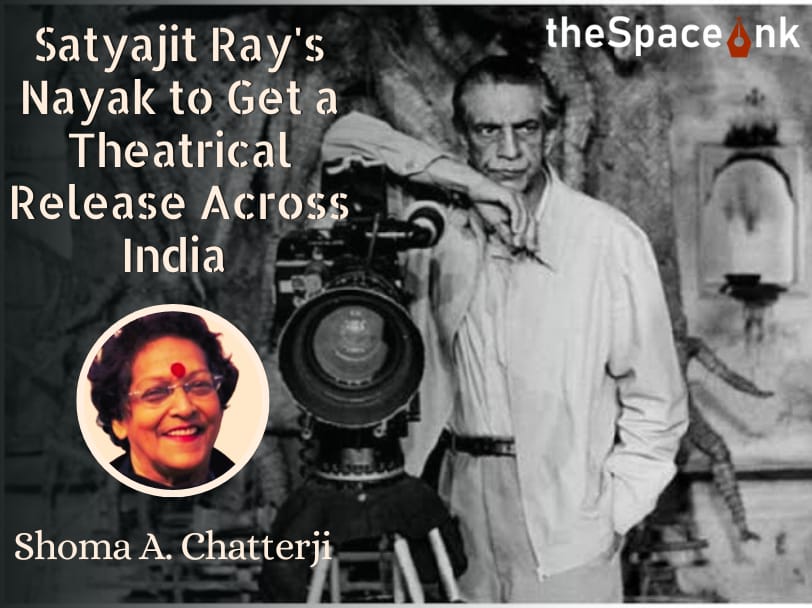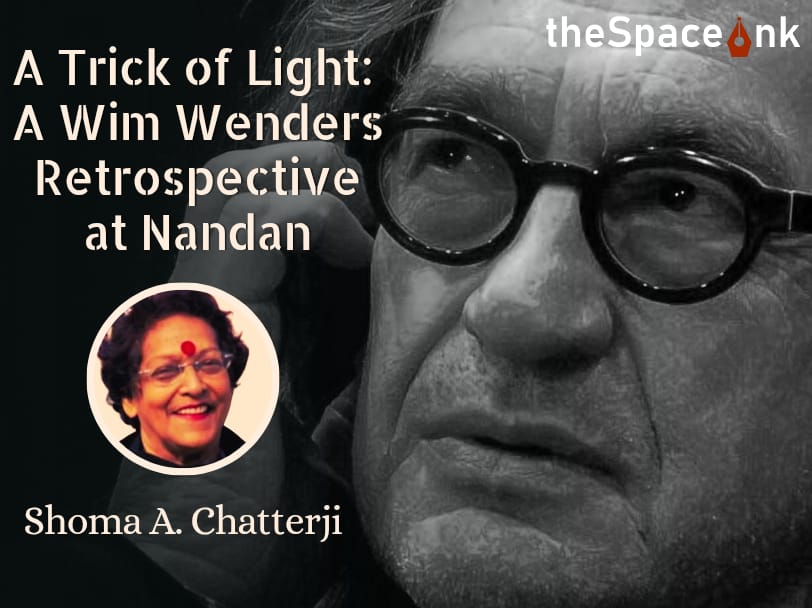Producers R. D. Bansal are poised to bring back a 2K restored version of Satyajit Ray’s Nayak across Indian theatres on 21st February after 59 years, the film having first premiered in 1966. The restored print includes English sub-titles. Varsha Bansal, granddaughter of R.D. Bansal, and representing the RDB Organisation, has taken charge of this re-birth which reportedly, remains perhaps the most outstanding performance of Uttam Kumar in the title role. The film will be released in Kolkata, Mumbai, Delhi, Bangalore, Pune, Hyderabad and Chennai.
Nayak (The Hero), was one of four digitally restored Ray movies and has already been screened in PVR cinemas in January 2014. Nayak is comparatively sidelined among Ray’s oeuvre but becomes a delightful rediscovery for one who has already watched the film before, once or more than once. Though it is an outstanding film, it seems to have been ignored by critics and film scholars compared to the attention paid to his other films. Nayak Nayak
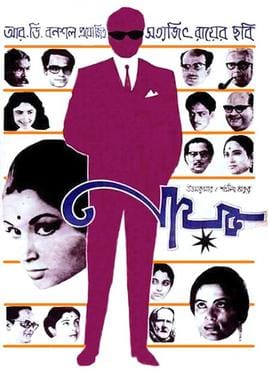
Some suspect that the reason is Ray’s choice of Uttam Kumar, the numero uno of Bengali cinema of the time, to play the protagonist who also happens to be a top star of Bengali cinema during the period in which the film is set. Uttam Kumar was a star, true. But he was also one of the most brilliant actors Bengali cinema has produced till date. The film is one of only three feature films in Ray’s body of work that is not an adaptation, and is an original screenplay written by Ray himself. Nayak Nayak Nayak Nayak
About his experience of having worked with Uttam Kumar, Satyajit Ray said, ‘It turned out to be the most pleasant experience of my career. I found that he belonged to the breed of instinctive actors. I hardly recall any discussion with Uttam on any serious, analytical level on the character he was playing. He surprised and delighted me with unexpected little details of action and behaviour, which came from him and not from me, always in character and always enhancing a scene. Nayak Nayak Nayak Nayak
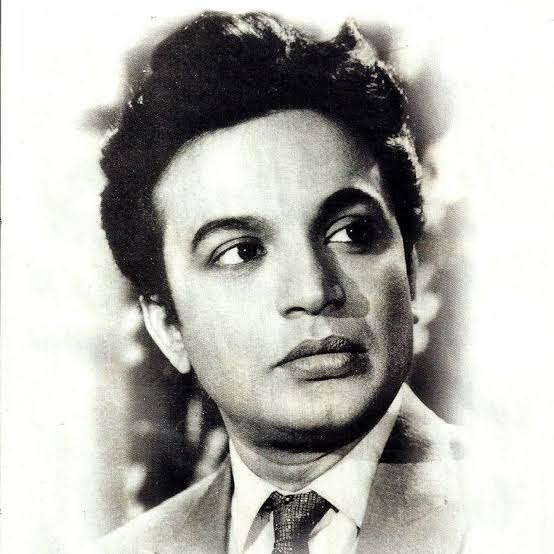
They were so spontaneous that it seemed he produced them out of his sleeve. If there was any cognition involved, he never spoke about it.’ It looked like an autobiographical performance of a struggling actor who rises to the top, gets the National Award, but finds himself completely alone, distanced from his friends and peers, misunderstood by everyone. Nayak Nayak
The storyline spans the time it takes for Rajdhani Express to travel from Kolkata to New Delhi.
Almost the entire film is shot inside the compartment of a moving train but in actuality, is a classic example of art director Bansi Chandragupta’s magic creative powers.
His design of the interior of a train for Nayak including the corridor, the dining car and even the toilet was so flawless that viewers took it to be real.
The story revolves around Arindam Mukherjee, the film-star hero, an icon who is travelling to Delhi to receive the National Award. His secretary, once his close friend, has failed to get a flight booking. Mukherjee is forced to get into the Rajdhani Express. Irritated with the unwanted attention of fellow-commuters, he shifts to the dining car. He chances upon Aditi Sengupta, the editor of a woman’s magazine who is going to Delhi to get a grant for her publication. The physical and geographical journey changes into a journey of introspection for the hero and of discovery for the journalist. Nayak Nayak

The media runs like a strong undercurrent just beneath the main story. In the compartment, one of the coupes is occupied by a very old and very rigid-minded man named Aghore Chatterjee who is known for his regular letters to the editor in The Statesman. Arindam steps into his coupe to have some fun at his expense when he is asked if he drinks, is married and so on.
Arindam is haunted by the news report of his drunken scene two nights before at a party, a topic of gossip among other travellers in the train. Aditi Sengupta edits a woman’s magazine named Adhunika (Modern Woman) but avoids using articles on films. The magazine does not have enough circulation so we find her requesting a subscription from one of the commuters she befriends.
Arindam agrees to give her an interview, which becomes an unfolding of his own life story, narrated to a perfect stranger he somehow gets to like–mainly because she treats him normally regardless of the aura he exudes. But the interview when Arindam is fully drunk causes him to regret his outpourings.
To respect their brief bonding, and his regret for having given away his closely guarded secrets in a moment of drunken weakness, Aditi tears up the sheets in which she took notes during the impromptu ‘interview’, a prized assignment for her, in his presence. When Arindam asks if she will forget what she wrote, she smiles shyly and says, ‘‘Will keep it in my heart’,’ an ambiguous statement.
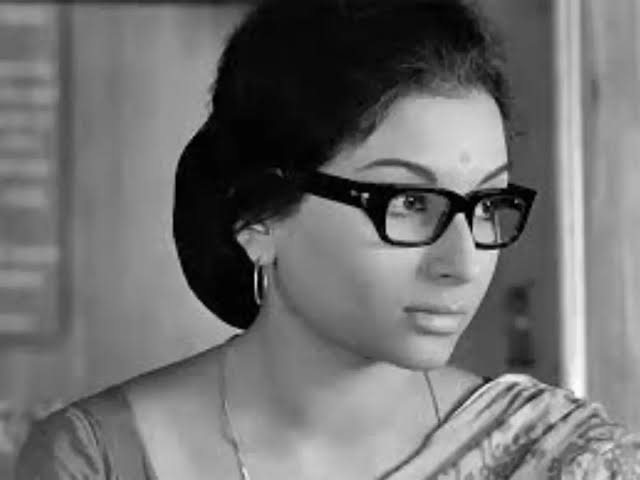
There is an interesting anecdote which bears a striking resemblance to a real-life experience of Uttam Kumar. An old friend of Arindam approaches him once and requests him to come along to a meeting. Arindam agrees after some hesitance. But when he reaches the scene, he is terrified to find that it is a political meeting that may spoil his image as a top hero. Film stars in Calcutta in those days were not expected to be involved in any kind of political activity. He reverses the car to turn back, despite the persuasion of this friend but the memory remains archived in the recesses of his mind.
The real-life analogy comes from a true incident Uttam Kumar was reportedly witness to when he went for his morning walk in the Maidan. In 1971, Saroj Dutta (born 1914), communist revolutionary, fiery journalist-editor and poet, disappeared from the city. His was a copybook case of forced disappearance amidst widespread State repression on communist rebels. The star was so scared that he ran away from the city and hid in Bombay (now Mumbai) with various relatives and came back only after the furore over the missing revolutionary died down.
Also Read: A Shameless Society, A Radical Woman, A Brutal Film
When the train chugs into Delhi railway station, people and fans crowd around the hero with huge floral bouquets and garlands. The journalist walks away quietly with her uncle. The hero tries to reach out and look at her over the heads of the crowd, but she does not turn back. For the journalist, it is just a chance but memorable encounter. For the hero, it is a painful emotional journey he had never bargained for. Nayak
There is a real journey in a real train moving from Kolkata to Delhi. But the journey is multi-layered with different stories branching out of the central encounter between the famous hero and the obscure editor. There is also an inner journey Arindam embarks on through the flashback into his life during the interview he gives to Aditi, walking her through his evolution from a suburban theatre actor to a matinee idol.
The physical journey marks a movement forward. The inner journey moves backwards into Arindam’s narration into his past life.
The journey is filled with flashbacks that include a couple of nightmarish scenes from the hero’s perspective. His character has a history that maps his journey as a small-town guy who used club theatre as a way to become a hero in films. But we do not learn about his family background – his parents, etc because in retrospect, these do not seem mandatory to the film. Nayak
There are several journeys-within-the-journey in Rajdhani Express. Aditi is not given any history except that comes across during her talk. We learn that she is single and has a cousin, edits a woman’s magazine She is familiar with the name and face of Mukherjee but has hardly watched his films.
Ray was a master in choreographing and composing dream sequences ideally suited to the character. The first dream sequence shows Arindam walking across a mound of currency notes till he is sucked into a hole that opens within that sea of notes and drowns.
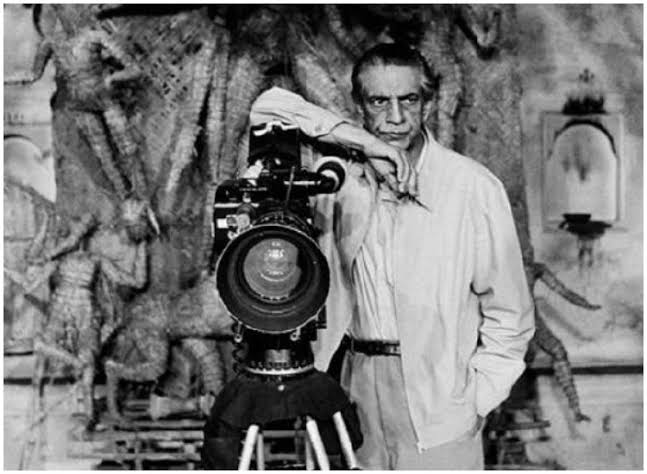
His theatre mentor, Shankar-da, who died during the Durga Puja immersion and firmly opposed Arindam stepping into films, stands in full make-up and costume and watches him drowning under the ocean of currency notes but does not stretch out his arm to pull him out. The soundtrack is filled with the ringing of many telephones that spring up like mushrooms in that ocean of currency notes, held by skeletal hands and then, Arindam suddenly wakes up in a sweat.
The second dream is also quite dark. Arindam is shown walking through a thinly treed forest and foliage when a female voice calls him from somewhere behind the bushes. It is a kind of hide-and-seek game which amuses Arindam in the beginning but he becomes intrigued as he cannot see the girl. The camera cuts to a dinner party where every guest is wearing dark glasses and looking back at him in complete silence when he enters the party. Someone tries to bash up Arindam. The scene then jumps to some anonymous railway station with the sound track filled with announcements over station’s sound system.
These very dark, depressing and defeatist dreams reflect the pathos and the loneliness of Arindam with much greater intensity and depth than the other scenes in which he is awake.
None other than Uttam Kumar could have gone under the skin and flesh and blood of Arindam Mukherjee the way he did.
Sharmila Tagore as the journalist-editor Aditi Sengupta comes across with a low-key, subdued performance filled with restraint. There is one point when near the door of the compartment, she arrives to find Arindam completely drunk. At one point, in the dining car, Aditi takes off her glasses and Arindam, a bit surprised, tells her, ‘‘Why, you look really good without your glasses!’’ and she shyly looks down.
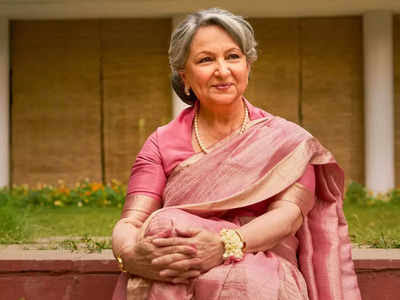
Arindam is a lonely, vulnerable and insecure young man with normal weaknesses and strengths like any other man of the street. During the journey, he tries to refrain from his usual addiction to cigarette and liquor as a courtesy to his fellow passengers but after some time, he smokes and drinks openly and even teases the old man Aghore Chatterjee in a neighbouring coupe who keeps saying he cannot stand the smell of alcohol. He also suffers from pangs of guilt for having backed out of the promise he made to his theatre mentor Sankarda of not getting into films.
The famous character actor who insulted him in front of the entire crew when Arindam was fresh and doing his first film, comes to the young actor’s lavish home, beaten, poor, old and out of work, for whiskey. This is a powerful comment on the impermanence of fame, glamour and affluence in the film industry.
The imaginative soundtrack with a single theme is exquisitely designed to fit into the running train ambience which changes from Arindam’s first class coupe to the dining car where the sound of the wheels are more audible; it becomes very loud inside the toilet and louder still when Arindam stands at the open door of the compartment and stares at the parallel tracks, possibly with thoughts of suicide flashing momentarily as the camera cuts back and forth to show the disturbed and sad expression on his face.
Nayak may not have turned out to be so outstanding and brilliant had Ray not worked out such wonderful casting by featuring the real-life star to portray the celluloid star.
Aditi discovers through her brief but deep interaction with him that this man who has millions of followers rushing to take his autograph is basically no less ordinary, lonely and defeated than these ‘followers’ which includes the other passengers travelling with him to the capital city.
Road movies sometimes reveal an absence of moral virtues either in the characters who hit the road, or morally upright characters who tend to get stripped of moral virtues somewhere along the way. The road peels off the masks of travellers to their bare essentials. This happens when men and women leave the comfort of their rooted lives to step out into the unknown and the unexplored. This does not always hold true for the Indian road movie but Nayak is a classic example of this portrayal.
Image Courtesy: Pinterest
Nayak
Shoma A. Chatterji is a freelance journalist, film scholar and author based in Kolkata. She has won the National Award twice, in 1991 and 2000. She has authored 26 published titles of which 14 are on different areas of Indian cinema. She holds two Masters Degrees and a Ph.D. in History (Indian Cinema). She has also won a few Lifetime Achievement Awards from different organizations over time.


